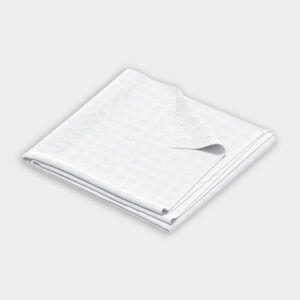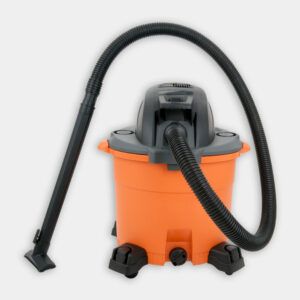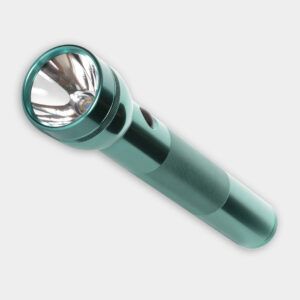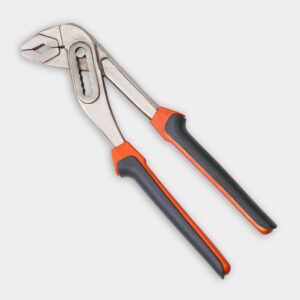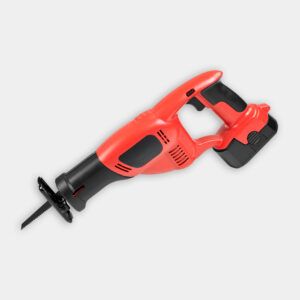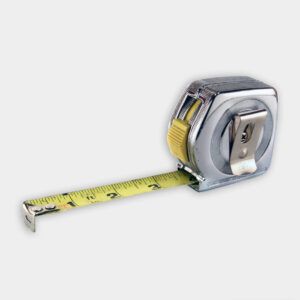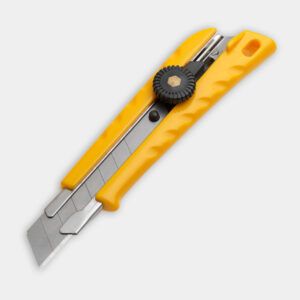We may be compensated if you purchase through links on our website. Our team is committed to delivering honest, objective, and independent reviews on home products and services.
Project details
Skill
Cost
Estimated Time
Replacing an old fireplace cover can enhance both the safety and aesthetics of your home’s hearth. In this guide, we’ll walk you through the process of replacing your fireplace cover, from assessing your current setup to installing a new, efficient model. This Old House expert mason Mark McCullough demonstrates the steps to replace a fireplace cover in the video above, offering valuable insights along the way.
*Unless otherwise noted, costs in this article reflect an average of prices that our team found from hardware stores like Lowes and Home Depot, and on Amazon.com.
Assessing Your Current Fireplace
Whether you’re dealing with stuck doors, a faulty damper, or simply want to update the look of your fireplace, installing a new cover is a manageable DIY project. But before diving into the replacement process, it’s essential to evaluate your existing fireplace setup. This assessment will help you identify any potential issues and ensure you choose the right replacement cover.
Examine the Firebox
Start by inspecting the firebox, which is the area where the fire burns. Look for these key elements:
- Burn patterns on the back wall
- Condition of the fire bricks
- Presence of creosote buildup
- Functionality of the damper
A healthy firebox should show a semicircular burn pattern on the back wall, indicating that the fire is burning hottest at the bottom. The fire bricks should be in good condition without significant cracks or damage.
Check the Damper
The damper is an important component of your fireplace, controlling the airflow and preventing heat loss when the fireplace is not in use. There are two main types of dampers:
- Polka damper: A cast iron extension that pushes the door up to open
- Rotary damper: A corkscrew mechanism that twists to open the door
Ensure your damper operates smoothly and creates a proper seal when closed. If you notice any issues with the damper, it may be time to replace or repair it along with your fireplace cover.
Evaluate the Current Cover
Examine your existing fireplace cover for these common issues:
- Stuck or difficult-to-open doors
- Loose or missing hardware
- Warped or damaged frame
- Cracked or cloudy glass panels
If you’re experiencing any of these problems, replacing your fireplace cover can significantly improve both function and appearance.
Preparing for Replacement
Before installing a new fireplace cover, you’ll need to remove the old one and prepare the area for the new installation.
Gather Tools and Materials
Collect the following tools and materials:
- Drop cloth
- Metal shovel or scoop
- Shop vacuum
- Flashlight
- Pliers
- Tape measure
- Utility knife
- New fireplace doors
- Fireplace insulation
Remove the Old Cover
To remove the old fireplace cover:
- Ensure the fireplace is completely cool, with no embers or coals present.
- Lay a drop cloth on the hearth to protect the area.
- Open the fireplace doors and remove any ash or debris using a metal shovel and shop vacuum.
- Locate the mounting bolts securing the old doors and loosen them with pliers.
- If the bolts are rusted or difficult to remove, you may need to cut them off with a reciprocating saw or pry them open with a bar.
- Carefully remove the old doors and set them aside.
Clean and Inspect the Fireplace
Once the old cover is removed:
- Thoroughly clean the fireplace opening and surrounding area.
- Inspect the firebricks inside the firebox for any damage or wear.
- Check the flue for proper operation and signs of creosote buildup.
- If you notice significant creosote accumulation, consider calling a professional chimney sweep for a thorough cleaning.
Measuring for the New Cover
Accurate measurements are vital for ensuring your new fireplace cover fits properly. In the video, McCullough commends the homeowner on their precise measurements, which resulted in a perfect fit for their standard 36-inch opening.
Take Accurate Measurements
To measure your fireplace opening:
- Measure the width at both the top and bottom of the opening.
- Measure the height on both the left and right sides.
- Record the smaller of each measurement to account for any irregularities.
- Use these measurements when ordering your new fireplace doors.
Installing the New Fireplace Cover
When your new fireplace cover arrives, you’re ready to begin the installation process.
Prepare the New Cover
- Place the new doors face-down on a drop cloth to protect them during preparation.
- Cut and install fireplace insulation around the inside of the doors according to the manufacturer’s instructions.
- Locate the fireplace training bolts and clip them into position on the back of the surround.
Fit the New Cover
- Carefully lift the new cover and position it in the fireplace opening.
- Open the doors to access the inside of the frame.
- Use pliers to tighten the top bolts, ensuring they wrap over the lintel (the metal bar across the top of the fireplace).
- Tighten the bottom bolts in the same manner.
- Check that the doors are level and even, adjusting as necessary.
Addressing Common Issues
During installation, you may encounter some common problems:
- Sticky or stripped rotary damper: Use epoxy putty to secure the knob in place
- Gaps between the cover and fireplace: Ensure proper insulation is installed around the frame
- Uneven fit: Double-check your measurements and adjust the mounting bolts as needed
Maintaining Your New Fireplace Cover
Proper maintenance is key to ensuring your new fireplace cover functions efficiently and maintains its appearance.
Regular Cleaning
Keep the glass clean to ensure optimal visibility and performance. Use a fireplace-specific glass cleaner and avoid abrasive materials or chemicals that could damage the glass.
Lubricating Moving Parts
Lubricate any moving parts, such as hinges and dampers, annually with a high-temperature lubricant. This will help prevent rust and ensure smooth operation.
Inspecting the Seal
Periodically inspect the seal around the doors. Over time, the insulation material may degrade, leading to gaps that can affect efficiency. Replace the insulation if you notice any wear or gaps.
Professional Inspection
Have your chimney and fireplace professionally inspected and cleaned annually. This will help identify any potential issues, such as creosote buildup, and ensure your fireplace operates safely.
Enhancing Fireplace Safety
While replacing your fireplace cover improves functionality and appearance, ensuring overall safety is crucial. Here are a few additional safety tips:
- Install smoke and carbon monoxide detectors: Place detectors near the fireplace and test them regularly to ensure they are functioning properly.
- Use a fireplace screen: Position a fireplace screen in front of the fireplace when in use to prevent embers from escaping into the room.
- Keep flammable materials away: Ensure that flammable materials, such as furniture, curtains, and decorative items, are kept at a safe distance from the fireplace.
- Follow manufacturer’s guidelines: Adhere to the manufacturer’s guidelines for operating your fireplace and using the new cover to maintain safety and efficiency.
Choosing the Right Fireplace Cover
Selecting the appropriate fireplace cover involves more than just measuring the opening. Consider the following factors to ensure you choose the best cover for your needs:
- Material: Fireplace covers are available in various materials such as steel, cast iron, and glass. Choose a material that complements your home’s decor and offers durability.
- Design: Consider the design and style of the cover to match your interior aesthetic. Options range from traditional to contemporary designs.
- Functionality: Evaluate the functionality of the cover. Look for features such as easy-to-open doors, secure seals, and ease of maintenance.
- Efficiency: Ensure the cover provides a proper seal to enhance energy efficiency and prevent heat loss when the fireplace is not in use.
By taking these factors into account, you can select a fireplace cover that not only enhances the visual appeal of your hearth but also improves safety and efficiency.
Material Options
These are some of the best options for fireplace cover material:
- Steel: Offers durability and a sleek, modern look. Ideal for contemporary interiors
- Cast iron: Provides a traditional and robust appearance. Excellent for classic or rustic decor styles
- Glass: Allows for full visibility of the fire, enhancing the ambiance. Suitable for both modern and traditional settings
Design Considerations
Consider options that align with your personal style and the overall decor of your home. Whether you prefer clean lines and minimalism or intricate details and ornate designs, there are covers available to suit your preferences.
